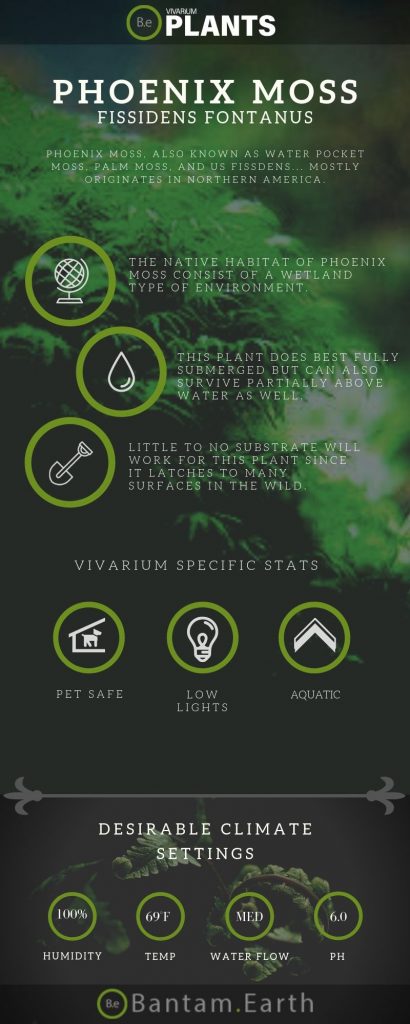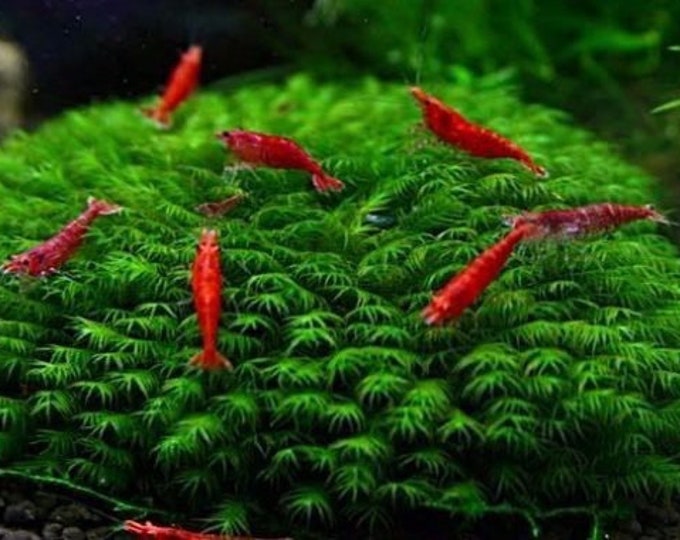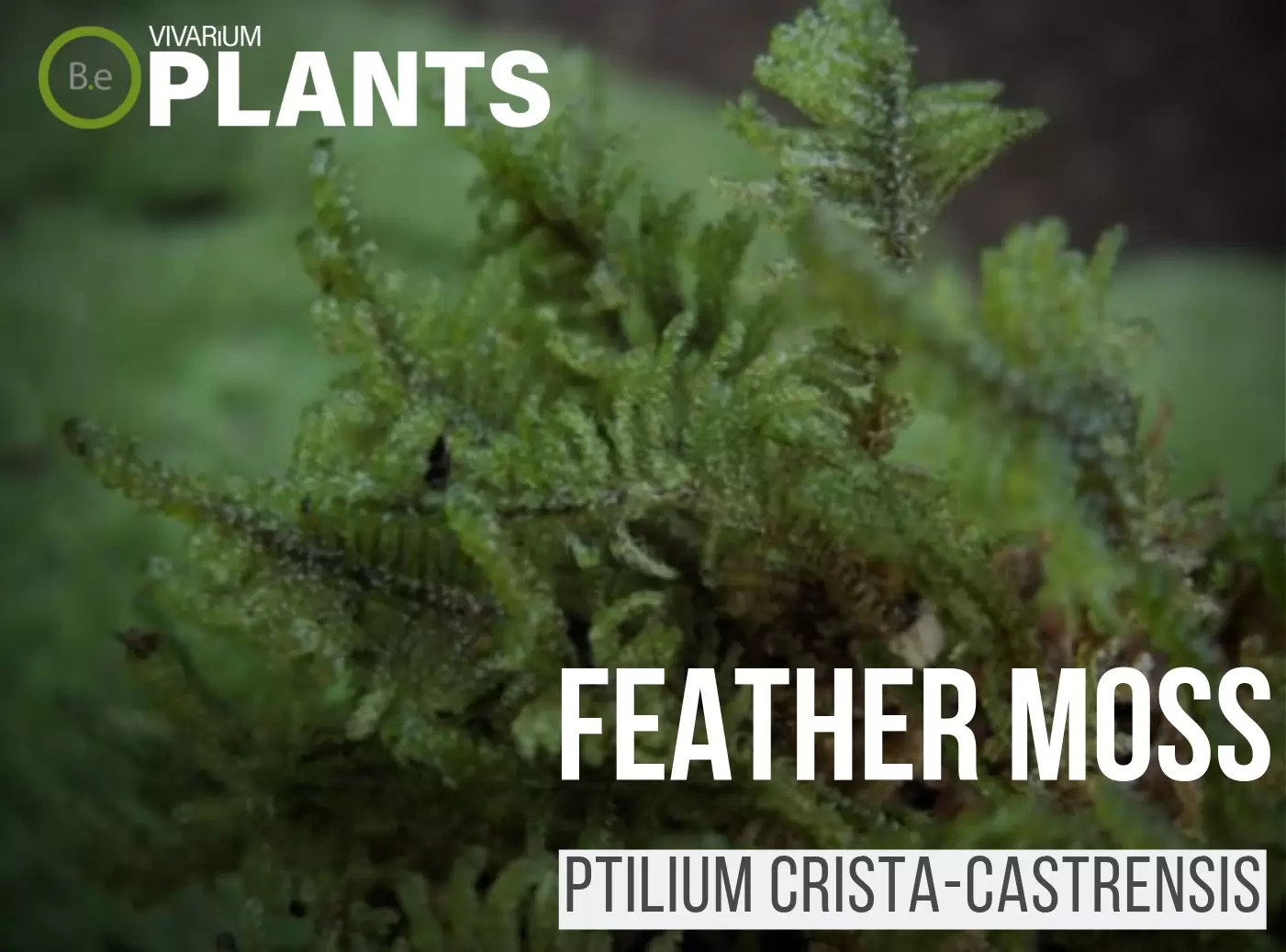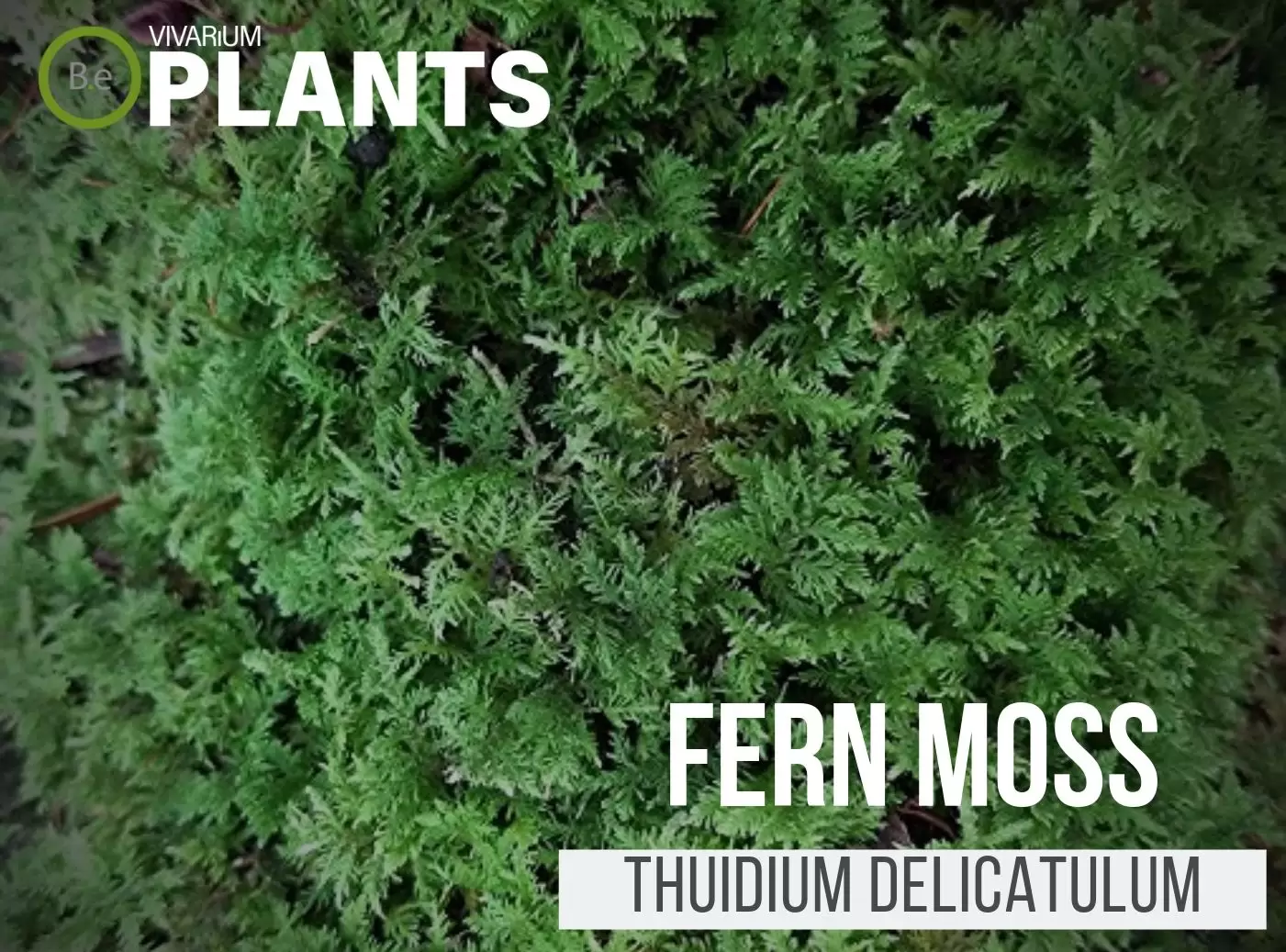Phoenix Moss (Fissidens fontanus) is quite an interesting moss that can be used in low-light aquariums.
This plant got its Latin name due to its appearance and the way it grows. Fissidens grow from the center out and resemble a streaming frozen fountain.
Its unique and striking look will easily catch any bystander’s attention making it a rewarding aquarium plant to own.
Table Of Contents:
ToggleWhat Is Phoenix Moss?
Phoenix moss belongs to the Fissidentaceae family and its genus includes up to 400 different kinds of mosses. It is an aquatic moss that has recently become very popular among freshwater aquarium hobbyists.
Phoenix moss is a very green, fluffy, lush plant that will easily attach to most substrates and surfaces. Like most other mosses it is able to provide a good hiding spot for fry and other small creatures.


Phoenix Moss Facts
Besides Phoenix moss, Fissidens fontanus is also commonly referred to as water pocket moss, palm moss, and US Fissdens.
It got its most common name Phoenix moss in Taiwan once it became part of the trading world.
Although its habitat is mostly in North America, this moss has become extremely popular for aqua-scaping all over the world.
Just like other mosses, Phoenix moss does not have actual roots. Instead, it has tiny hair-like “hands” that help it attach itself to other surfaces or objects.
It then uses its leaves and stems to be able to absorb all the nutrients it needs to survive.
Description
Fissidens fontanus is generally dark green and will often vary in lighter or darker shades depending on how much it has aged.
The younger leaves will appear light green, but change to olive green and black as they get older.
Phoenix moss branches will grow up to 1 inch long and have thin, long, and sharp-looking leaves.
The leaves will all be attached to the stem in a very precise pattern. It can usually be seen growing in rivers or lakes on top of a variety of surfaces.
Phoenix moss will attach itself to rocks or wood and form a round-shaped dome.
Due to the specific way it grows, it will always tend to have a very round shape.
Most attempts at trimming the plant to create a different look will be futile.
Habitat
Phoenix moss is relatively a newly discovered plant native to North America. It can be very easily found dispersed throughout most of Illinois and even Europe.
As long as there is a natural high-quality wetland around, phoenix moss can easily be spotted. They can even be found growing in lakes as deep as 60 feet.
Phoenix moss seems to thrive most fully submerged, although it might appear above the water on rare occasions.
Regardless of where it is found, a clean water supply and a cool shaded area are always essential.
Phoenix moss is quite sensitive to both temperature and light.
It can actually survive during the winter but will turn fully brown during the summer due to an abundance of light and heat.
The average temperatures in this native habitat will range from 59 to 77 degrees Fahrenheit.
However, it should still be able to tolerate temperatures anywhere between 39°F and 78 °F without any issues.
pH Preference
Like many mosses, Phoenix moss tends to prefer acidic soft water to grow in.
Ideal pH levels will be in a range of 6.0 to 8.0 but these Fissidens can survive more neutral levels.
Vivarium Type
This type of moss will do great in a variety of vivarium types.
When deciding if rather or not to use this moss in a particular type of enclosure, be sure to go with setups that have aquatic features.
Here are recommended vivarium Fissidens fontanus will do well in:
- Paludarium – Half aquatic/ half terrain-based enclosure.
- Riparium – Mostly aquatic-based enclosures with some terrain features present.
- Aquarium – Fully aquatic-based enclosures with little to no dry terrain.
Vivarium Placement
Fissidens fontanus is an aquatic-based plant. Although it can survive above water, it will thrive better partially submerged or fully placed underwater.
Since this moss can pretty much attach itself to any surface, it can be used to decorate stones, driftwood, and walls.
When used for decoration, it is usually better to place Phoenix moss closer to the front instead of the secluded corners of the tank.
This way its unique shape and vivid colors will help attract the observer’s attention to that particular area.
Due to its smaller round shape, Phoenix moss can be used both in standard aquariums filled with fish as well as small nano tanks.
Substrate
Phoenix moss can grow on a number of surfaces due to its unique way of absorbing nutrients and shallow root structure.
In the wild, this plant is typically found in rivers or lakes attached to rocks or pieces of wood.
As long as there is clean flowing water, phoenix moss will usually be able to excel anywhere with little to no substrate.
Lighting
Phoenix moss does best in low to moderate-light environments. Exposing this plant to direct sun will cause it to dry out.
When setting up lighting within an aquarium, a high level of brightness would be ideal.
The tank should not be in direct sunlight and preferably away from any type of artificial light that produces UV.
Aim for cooler color lights that replicate a cloudy day.
Buy Phoenix Moss
When shopping for possible Phoenix moss for sale, expect a few key indicators you are buying the best quality plant.
The moss should be snail free along with any other type of pest. The source of moss will usually be sold in small tissue cultures, ready for you to propagate.
The batch should arrive fairly moist and in fairly good shape. Click the image below to find out more about the current price and other relative info:


Phoenix Moss Care and Propagation
In the wild, Fissidens fontanus uses spores to reproduce. These spores are created in a distinctive seed capsule called sporangia.
When sporangia reach maturity and open up the spores get deposited onto a parent plant where they can grow.
This process will continuously happen on its own and ensures that the moss remains bright green and full.
How to grow
Surprisingly, indoor aquariums can be the best locations to propagate Phoenix moss.
These locations allow for better-controlled growth conditions and modifications to allow as much expansion as possible.
It is not necessary to add carbon monoxide to the water since this moss does well without it.
The most effective method to cultivate Phoenix moss is by dividing the plant into smaller pieces.
These pieces can then be tied down to a mesh/net with thread or fishing string.
Doing so will ensure that the moss remains attached while it begins to stick on its own and regenerate.
Watering
Being that Phoenix moss is usually grown underwater, it will not really require any watering.
However, just like Java moss, it will greatly benefit from a steady water flow.
Stagnant water promotes algae growth, which will damage this plant and the whole tank.
Periodic water changes as well as trimmings can help make sure that Fissidens fontanus reached its full growth potential.
Plants Similar To Phoenix Moss
Adding diversity to an enclosure is key to an aesthetically pleasing enclosure.
Try mixing up the look of your vivarium with different flora that can easily co-exist in the same types of environment.
Furthermore, if for some reason you find this moss hard to acquire or would like to consider something similar to this plant…
Here are some other plants you might find very similar to Fissidens fontanus:
Conclusion
There you have it. A quick beginner’s guide to the recently discovered Fissidens fontanus.
Whether you are setting up a brand new aquarium or simply revamping an existing one, Phoenix Moss is a great choice for vivariums.
Not only is it easy to take care of, but it is also an excellent way to take your aquascaping to the next level. Although it is not an extremely fast-growing aquarium moss, it will populate any aquarium if it’s properly conditioned.
Frequently Asked Questions
Yes, Phoenix Moss (Fissidens fontanus) is relatively easy to grow in aquariums and in growing mediums like Coco Coir. Generally speaking, it prefers moderate lighting and soft water parameters. And, as with all aquatic plants, nutrient–dense fertilizers and CO2 supplementation will help create optimal growing conditions.
Yes, Phoenix Moss can be grown both submersed and emersed. Emersed growth is best achieved by planting directly into moist substrate or attaching the moss to a rock or other object and keeping it consistently moist.
Phoenix Moss (Fissidens fontanus) is a fast–growing aquarium plant. Under optimal conditions, this moss species can double in size in a matter of weeks. The growth and spreading of Phoenix Moss can be increased by providing it with enough light, carbon dioxide, nutrients, and freshwater.
Yes, Phoenix Moss (Fissidens fontanus) does need CO2 in order to thrive in an aquarium environment. CO2 helps with photosynthesis and the growth of aquatic plants, including Phoenix Moss. Without adequate CO2, your Phoenix Moss will not be able to photosynthesize effectively, stunting its growth and possibly leading to death. However, under the right conditions/ environment it does not require any extra or added CO2.
Phoenix moss (Fissidens fontanus) is a small aquatic plant species found in both temperate and tropical waters around the world. This moss is an extremely versatile aquarium plant, as it can grow in low to high-light conditions and can be used both as a carpeting plant and a mid-ground accent plant. Phoenix moss is also extremely easy to care for and requires no additional fertilization or CO2 enrichment to grow, making it ideal for low-maintenance aquascapes.






Comments are closed.